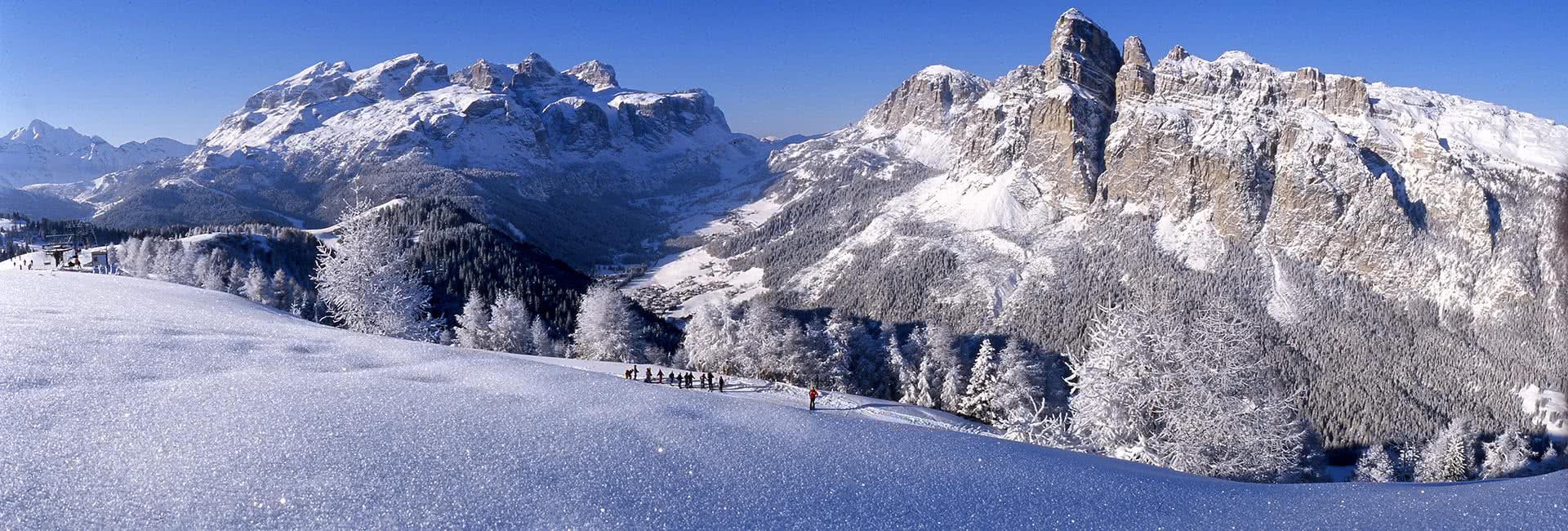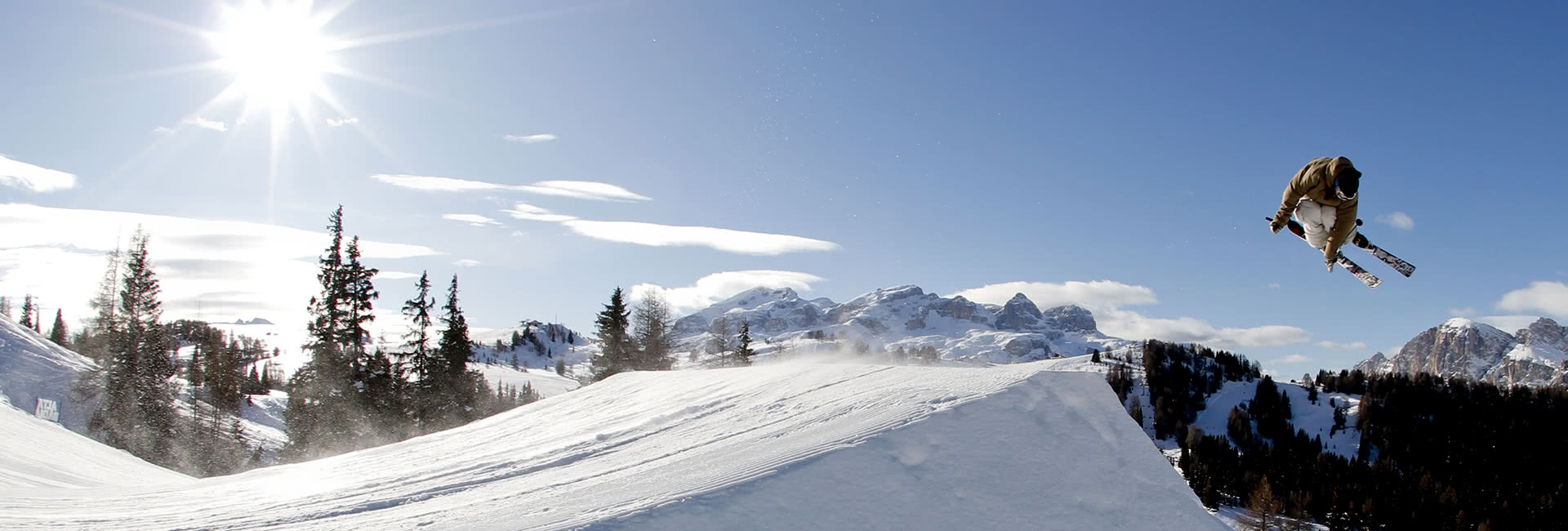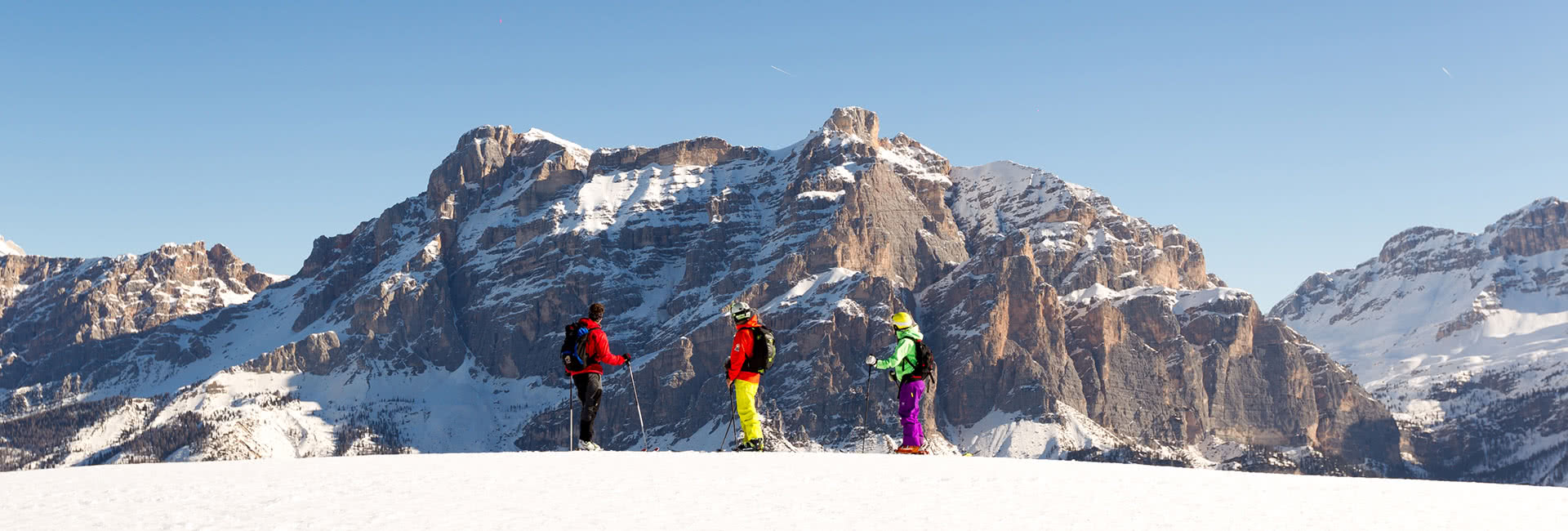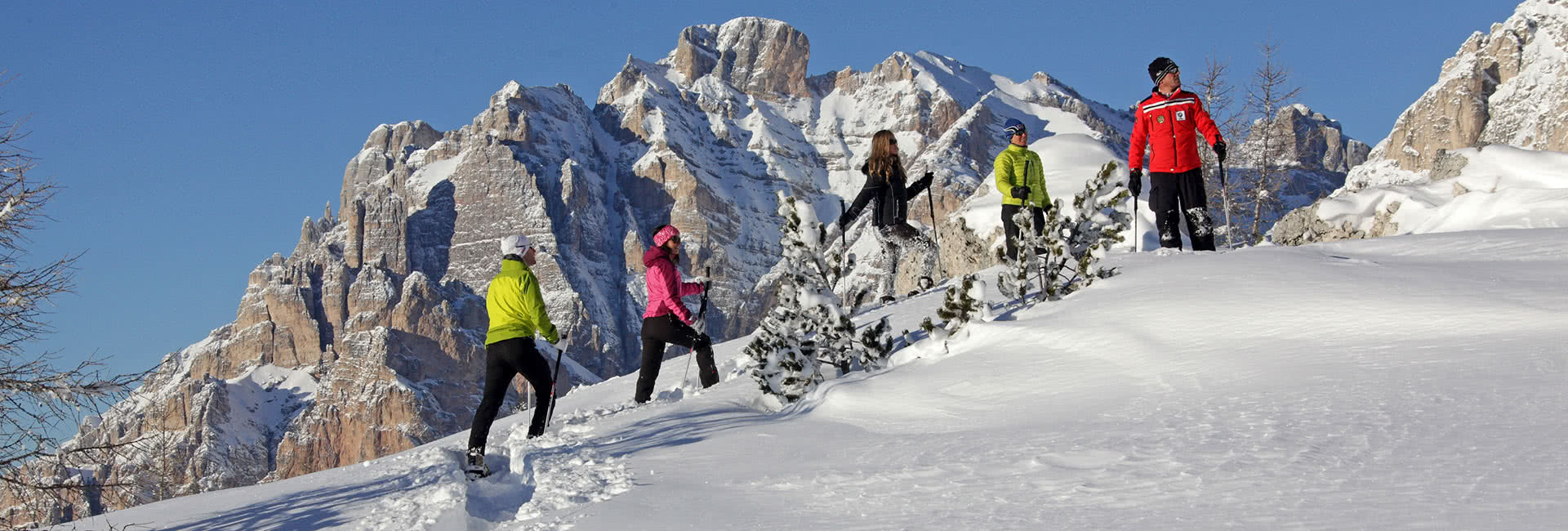Ski Holidays in Alta Badia
Some of the best views, mountain food and ski runs you’ll ever experience call Alta Badia home, and the six villages dotted around the valley make splendid bases to enjoy it all from.
- Flight Time
- 2 hours
- From London
- Nearest Airports
- Turin, Milan Malpensa
- Geneva, Innsbruck
- Time zone
- GMT + 1 hour
- Language
- Italian
- Currency
- Euros
- Ski Season
- Dec - April
Alta Badia Stats
Alta Badia - a valley of rolling hills and craggy peaks - occupies 16km of the spectacular Dolomites, and the villages of Corvara, Colfosco, Badia, San Cassiano, La Villa and La Val. This is UNESCO listed territory, and rightly so – the Puez Odle and Fanes-Senes-Braies natural parks that spill into the valley have ancient and majestic landscapes.
Raetians were settled here before the Romans took over 2000 years ago, pressing Latin on the Rhaetian language which eventually became the Ladin tongue still spoken in this region today.
As for tourism, it wasn’t until the latter half of the 18th century that visitors started showing interest in the mountains, asking locals to lead them on climbs of the Dolomites. Some trained as mountain guides with the German-Austrian Alpine Club, returning home to take over hotels in villages like Corvara. After a hiatus over WW1, tourism steadily grew. Corvara was the first village to have a ski school in 1938, and Italy’s first chair lift in 1947. Slowly but surely, Alta Badia became one of the best tourist destinations in the Dolomites.
These days, the name Alta Badia refers to a ski area as well as the valley it lies in. It belongs to the wider Dolomiti Superski area, and with a central position, makes for an excellent base to explore from.
What's the ski area like in Alta Badia?
Which ski resorts are in Alta Badia?
Ski Area Facts
Beginner Slopes
Intermediate Skiing
Advance & Expert Terrain
Snowboarding Trails
Corvara has the liveliest après in the area, with L Murin – a refurbed old barn – hosting the biggest parties. For something a little more refined, head to the Altrove bar in Colfosco. Wood, stone, cow hides and fireplaces come together to provide a perfectly rustic place to relax, listen to live music and drink vino. For views, we like Col Pradat which serves awesome hot chocolates and cakes on outdoor armchairs. Club Moritzino on the mountain above La Villa has DJ’s and entertainment, as does San Cassiano’s Las Vegas Lodge on Wednesday evenings.
Food wise, this neck of the woods has some of the best restaurants in the Dolomites. San Cassiano is practically glittering with Michelin stars – La Siriola has one for its imaginative Italian cuisine while St Hubertus earned two for Chef Norbert’s other-worldly Alpine creations. That’s not your lot, with La Stüa de Michil in Corvara having a well-deserved star for its Alpine-Italian nosh served in cosy Stube-style rooms.
For something a little different, head to the Tana dell'Orso in Badia – last time we were here a horse drawn sleigh would meet you from the pistes to bring you to the chalet, which is quirkily decorated with witches and bears.
Of course you can’t ski Italy without feasting on a pizza or two – try Fornella in Corvara, La Villa’s La Tor or Luianta in Colfosco.
For outdoor activities, choose between winter walking, snow-shoeing or spa-time in San Cassiano’s Natura Wellness Sass Dlacia.
Best Time to Visit Alta Badia
What's Alta Badia like at Christmas?
Corvara and San Cassiano usually host festive markets and Santa often pays a visit to Colfosco on the lead up to Christmas in Alta Badia.What's Alta Badia like in the New Year?
Torchlight descents traditionally take place in San Cassiano, Colfosco, Badia and La Villa to mark the end of the year, with a big party in Corvara and music events to celebrate the New Year in Alta Badia.What's Alta Badia like in Half-Term?
The pistes, restaurants and activities here are wonderfully family friendly, and usually nice and quiet over Half Term in Alta Badia.What's Alta Badia like at Easter?
Look out for end of season events over Easter in Badia, when the views of the Dolomite peaks are jaw-dropping.Ski Accommodation in Alta Badia
Search all Alta Badia ski deals or pick your preferred accommodation type below:
Alta Badia Ski Holiday Resources
Need help choose your Alta Badia ski holiday? Call us on 020 7770 6888 or click Enquire - we love to help!
Ski Resorts in Alta Badia















